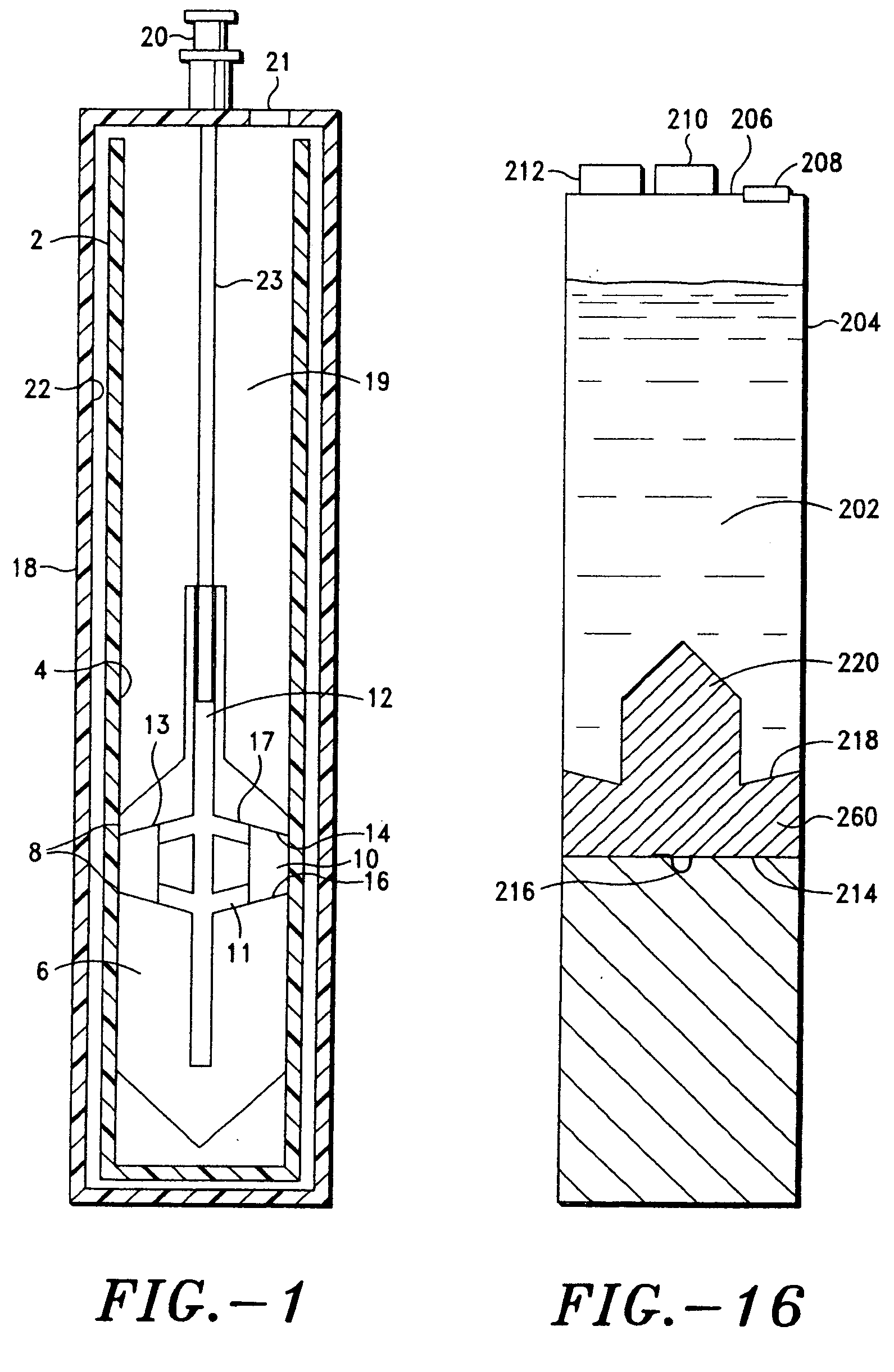Methods and apparatus for isolating platelets from blood
a technology of platelets and apparatus, which is applied in the field of methods and apparatus for isolating platelets from blood, can solve the problems of distressed” platelets which partially disintegrate, the most difficult platelet isolating and purifying, and the centrifugation can damage the platelets, etc., and achieves the effect of simple and fast preparation
- Summary
- Abstract
- Description
- Claims
- Application Information
AI Technical Summary
Benefits of technology
Problems solved by technology
Method used
Image
Examples
example 1
Parasol Float Device
[0119] A parasol design platelet concentrator device of the type depicted in FIG. 1 was constructed. The float was comprised of polyethylene and polycarbonate in such proportion as to have an overall density of 1.06 g / ml. The outer diameter of the float was 2.62 cm and its overall length was 4.57 cm. The float together with two stainless steel balls 0.32 cm in diameter in the platelet receptor cavity was inserted into the sealed end of a flexible silicone rubber tube. The flexible tube had an inner diameter of 2.54 cm, a wall thickness of 0.08 cm, and a sealed distal end. The flexible tube containing the float was housed within a rigid polycarbonate tube with inner diameter of 2.86 cm and length 11.43 cm. The top of the flexible tube was folded over the top of the rigid tube and a cap with a 7.62 cm tube 23 (see FIG. 1) was fitted over the folded top of the flexible tube with tube 23 engaging channel 12.
[0120] The device was filled with 30 ml of freshly drawn w...
example 2
Plunger-Float Device with Snorkel
[0123] A platelet concentrator device of the type depicted FIG. 9 was constructed. The float was comprised of polyethylene and polycarbonate in such proportion as to have an overall density of 1.08 g / ml. The outer diameter of the float was 2.535 cm and its overall length was 1.2 cm. The float was inserted into a rigid polycarbonate tube with an inner diameter of 2.540 cm and length 11.43 cm. The bottom of the rigid tube was sealed.
[0124] The device was filled with 25 cc of freshly drawn whole blood anti-coagulated with CPDA-1. The device was centrifuged in an IEC CRU 5000 centrifuge for 15 minutes at 1800 rpm. Following centrifugation the plunger was depressed by inserting a blunt hypodermic needle connected to a 10 cc syringe through the central access port until it collided with the stop on the top of the float. The device was swirled vigorously to resuspend the platelets within the platelet receptor cavity after withdrawing 0.5 cc through the hy...
example 3
Plunger-Float Device without Snorkel
[0127] A platelet concentrator device of the type depicted in FIG. 9 was constructed, except without the snorkel tube so that the only fluid communication between the space below the plunger and the space above the plunger was through a platelet receptor cavity. The float was comprised of polyethylene and polycarbonate in such proportion as to have an overall density of 1.08 g / ml. The outer diameter of the float was 2.535 cm and its overall length was 1.2 cm. The float was inserted into a rigid polycarbonate tube with an inner diameter of 2.540 cm and length 11.43 cm. The bottom of the rigid tube was sealed.
[0128] The device was filled with 25 cc of freshly drawn whole blood anti-coagulated with CPDA-1. The device was centrifuged in an IEC CRU 5000 centrifuge for 15 minutes at 1800 rpm. Following centrifugation, the plunger was depressed by inserting a blunt hypodermic needle connected to a 10 cc syringe through the central access port and press...
PUM
| Property | Measurement | Unit |
|---|---|---|
| Pressure | aaaaa | aaaaa |
| Density | aaaaa | aaaaa |
| Flexibility | aaaaa | aaaaa |
Abstract
Description
Claims
Application Information
 Login to View More
Login to View More - R&D
- Intellectual Property
- Life Sciences
- Materials
- Tech Scout
- Unparalleled Data Quality
- Higher Quality Content
- 60% Fewer Hallucinations
Browse by: Latest US Patents, China's latest patents, Technical Efficacy Thesaurus, Application Domain, Technology Topic, Popular Technical Reports.
© 2025 PatSnap. All rights reserved.Legal|Privacy policy|Modern Slavery Act Transparency Statement|Sitemap|About US| Contact US: help@patsnap.com



